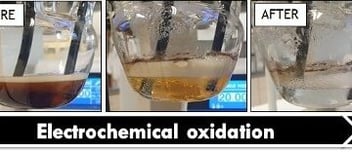How sugar could cut nitrogen in Orange effluent
University of Sydney engineering honour student Claudia Jerogin is working with Orange City Council on research that could improve the quality of effluent released from the city’s sewage treatment plant.
The chemical and biomolecular engineering student will attempt to lower the nitrogen level in the city’s effluent using a process called carbon dosing.
Orange City Council has noticed fluctuating levels of nitrogen in its wastewater in recent years. Too much nitrogen can have a negative effect on the environment and result in algal blooms.
“At the Orange waste water treatment plant they monitor it really carefully and they’ve noticed it’s been fluctuating for the last couple of years," Jerogin said.
"My project aims to ensure it is consistently below acceptable levels.”
Jerogin is experimenting with a method of carbon dosing that involves adding two sugars — sucrose and glycerol — during the treatment process. The presence of the sugar speeds up reactions in the bacteria that cause nitrogen to be removed from the wastewater.
The sugar sources encourage the bacteria to eat the nitrogen compounds and release the nitrogen into the air as a gas, preventing it from being dissolved into wastewater streams, and being introduced into the waterways.
“Some people call it giving the bacteria a sugar high,” Jerogin said.
“I put carbon, so that’s different sugar sources, into the wastewater stream, which encourages the bacteria to eat the nitrogen compounds and release them as nitrogen gas into the air. That prevents it from being dissolved in the wastewater stream that we release into the environment.
Jerogin is testing the feasibility and effectiveness of this form of carbon dosing. Other forms, which use alcohols such as methanol and ethanol, have greater safety concerns.
“Sucrose and glycerol, they’re food grade sugars, they’re not going to cause any harm if they’re spilled or there are issues with operational handling,” she said.
As part of the university’s Major Industry Project Placement Scholarship scheme, Jerogin will spend six months working full time with Orange City Council on the project.
The scheme is designed to give students hands-on experience in industry, and to undertake a high-level investigative project, based on the needs of their partner organisation. It also gives the organisations exposure to top students at an early stage in their career.
Orange City Council provides funding towards Jerogin’s scholarship and is providing accommodation for her while she is in Orange. She is one of 14 students participating in the scheme this year, about half whom are conducting research in regional communities.

